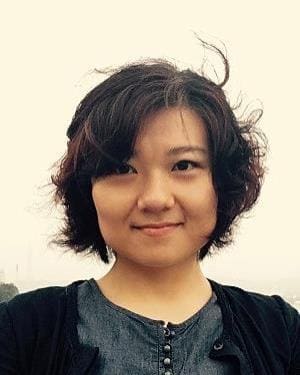
Lijing Jiang
Assistant Professor
Contact Information
- [email protected]
- Curriculum Vitae
- Gilman 378
- 410-516-7504
Research Interests: History of Biology and Biotechnology; China, Japan, and Asia; Model Organisms; Environmental History
Education: PhD, Arizona State University
I am a historian of modern life sciences, often finding myself probing the question how epistemic and cultural interpretations and material manipulations of organisms or objects shaped varied processes of knowledge production in biology and biotechnology. I started my major inquiries with a PhD dissertation on the history of cell death and aging research and am currently working on a monograph about how ornamental fish functioned as model organisms in twentieth-century East Asia and North America. I am interested in advising students working on projects related to history of biology, biomedicine, biotechnology, or the environment.
My first book project The Entangled Model Fish gives a historical account about how goldfish, medaka, and zebrafish became model organisms in the life sciences in twentieth-century China, Japan, and the United States. It tells a transnational history of fish genetics, embryology, and aquaculture that reveals the significant contributions from East Asia that shaped how the celebrated model organism zebrafish became understood, represented, and manipulated in biology, biomedicine, environmental testing, and science education. It challenges the notion that model organisms are intrinsically global, universal research materials. Instead, it shows how national concerns, unique intellectual and cultural traditions, and international politics etched deeply into the “thoughts in action” regarding these model fish.
My second book project, with a working title Fish Nations: Species, Technology, and Environments in Asia’s Aquacultural Transformation aims to offer a history of modern aquaculture in Asia with a focus on the social and environmental contexts and consequences of a set of aquaculture technologies as they emerged in specific national contexts and diverged while traveling across borders. Meanwhile, I try to find time to revise my PhD dissertation Degeneration in Miniature into a monograph, while hoping to eventually write a trade book presenting a new history of biology through a handful of species prevalent or indigenous in East Asia, possibly with the title, taking Jim Endersby’s cue, A Goldfish’s History of Biology. Besides book projects, I have been studying and publishing about selected cases in history of biology to explore how transnational or comparative perspectives can help reveal new dimensions that were hidden in the narratives given through a national or global framework. The most recent intellectual product from this effort is about how the evolutionary biologist Chen Shixiang, working in socialist China, invented a dialectical method for insect taxonomy as he attempted to offer a solution to Ernst Mayr’s “the species problem.”
While being a biochemistry graduate student, I was fascinated by how cultural imaginations could shape laboratory practices and entered the study of the history of science. My training started at the Center for Biology and Society, Arizona State University and developed further while I worked as a postdoctoral fellow at Princeton University, Nanyang Technological University, Singapore, and Yale University. I have taught courses related to history of modern science, history and philosophy of biology, history of medicine, science and technology studies, and environmental history at Colby College’s Program in Science, Technology and Society and at Hopkins. I bring global perspectives and diverse intellectual exposures into the classroom and encourage students to form questions, make connections, and create toolboxes of their own.
History of Biology and Biotechnology; China, Japan, and Asia; Model Organisms; Environmental History
“The Dialectics of Species: Chen Shixiang, Insect Taxonomy, and ‘the Species Program’ in Socialist China,” in David A. Bello and Daniel Burton-Rose, eds. Insect Histories of East Asia (University of Washington Press, 2023), 183–201.
“The Late Ascent of Darwin’s Descent: Exploring Human Evolution between Sex, Biology, and the Chinese Nation, 1927–1957.” Erika Milam and Suman Seth eds. Special Issue: The Descent of Darwin, BJHS Themes, 6 (2021), 201–220.
With Vivian Ling, “A Different Kind of Synthesis: Artificial Synthesis of Insulin in Socialist China,” History and Technology, 35: 4 (2019), 453–480.
“Global Epidemiology, Local Message: Sino-American Cooperation on Cancer Research, 1969-1990,” in Patrick Manning and Mat Savelli, eds. Global Transformations in the Life Sciences, 1945–1980 (University of Pittsburgh Press, 2018), 78–98.
“The Socialist Origins of Artificial Carp Reproduction in Maoist China,” Science, Technology & Society, 22, no. 1 (2017): 59–77.
“The Old, the New and the State in the Making of Modern East Asian Medicine” (essay review), Studies in History and Philosophy of Biological and Biomedical Sciences, 64 (2017): 88–91.
“Retouching the Past with Living Things: Indigenous Species, Tradition, and Biological Research in Republican China, 1918-1937,” Historical Studies in the Natural Sciences 46, no. 2 (2016): 154–206.
With Hallam Stevens, “Chinese Biotech versus International Ethics? Accounting for the China-America CRISPR Ethical Divide.” BioSocieties 10 (2015), 483–488.
“IVF the Chinese Way: Zhang Lizhu and Post-Mao Human in vitro Fertilization Research,” East Asian Science, Technology and Society: An International Journal 9, no. 1 (2015): 23–45.
“Causes of Aging Are Likely to be Many: Robin Holliday and Changing Molecular Approaches to Cell Aging, 1963–1988,” Journal of the History of Biology 47, no. 4 (2014): 547–584.